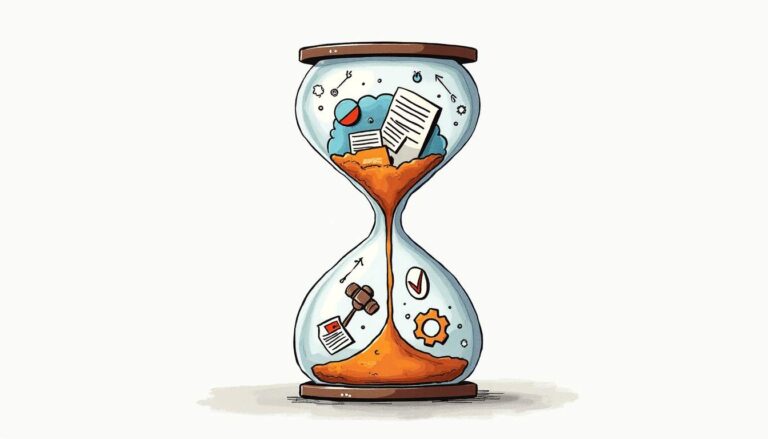In the complex world of procurement, smart purchasing managers are constantly seeking ways to enhance their operations and ensure successful outcomes. However, even the most experienced professionals can fall victim to common procurement mistakes. From overlooking the importance of supplier relationships to neglecting risk management and data analysis, these errors can undermine the effectiveness of the procurement process. In this article, we will explore these seven procurement mistakes and provide insights on how smart purchasing managers can avoid them to drive success.
Understanding Procurement Mistakes
Before delving into the specific procurement mistakes, it is important to understand the significance of avoiding these errors. Procurement mistakes can lead to reduced efficiency, increased costs, and negative impact on overall organizational performance. By recognizing and sidestepping these pitfalls, smart purchasing managers can optimize their processes, improve supplier relationships, mitigate risks, and drive sustainable practices.
The Importance of Avoiding Procurement Errors
Poor procurement practices can have severe consequences for an organization. Research shows that procurement errors can result in an average of 10% to 17% higher costs for goods and services. Moreover, these mistakes can lead to delays, quality issues, and even damage to the organization’s reputation. By avoiding these errors, purchasing managers can effectively allocate resources, ensure timely delivery, and enhance overall operational efficiency.
Common Misconceptions about Procurement Mistakes
Before we delve into the specific procurement mistakes, let’s address some common misconceptions. One misconception is that procurement mistakes are only relevant for large-scale organizations. In reality, even small businesses can face significant consequences due to procurement errors. Additionally, some may believe that procurement mistakes are inevitable in a complex and dynamic environment. However, with proper planning and execution, these mistakes can be minimized or even eliminated.
Now, let’s explore some of the specific procurement mistakes that organizations should be aware of:
1. Lack of Supplier Evaluation: One common mistake is failing to thoroughly evaluate potential suppliers. This can result in partnering with unreliable or unethical suppliers, leading to poor quality products or services. By implementing a robust supplier evaluation process, organizations can ensure that they are working with trustworthy partners who can meet their requirements.
2. Inadequate Contract Management: Another mistake is neglecting proper contract management. Contracts should clearly outline the terms and conditions, including pricing, delivery schedules, and quality standards. Failure to manage contracts effectively can lead to disputes, missed deadlines, and financial losses. Organizations should establish a systematic approach to contract management, including regular reviews and updates.
3. Lack of Strategic Sourcing: Some organizations make the mistake of not adopting a strategic sourcing approach. Strategic sourcing involves analyzing the organization’s needs, identifying potential suppliers, and negotiating favorable terms. Without a strategic sourcing strategy, organizations may miss out on cost savings opportunities and fail to align procurement with overall business objectives.
4. Insufficient Risk Management: Procurement involves inherent risks, such as supply chain disruptions, supplier bankruptcies, or changes in market conditions. Failing to implement proper risk management practices can leave organizations vulnerable to these risks. It is crucial to identify potential risks, develop contingency plans, and regularly monitor the risk landscape to mitigate any potential impact.
By understanding and avoiding these procurement mistakes, organizations can enhance their procurement processes, improve supplier relationships, and achieve better overall outcomes. It is essential for purchasing managers to stay informed, continuously evaluate their practices, and adapt to the evolving procurement landscape.
Mistake 1: Ignoring the Importance of Supplier Relationships
Supplier relationships play a crucial role in procurement success. Failing to acknowledge this can lead to supplier dissatisfaction, unreliable deliveries, and higher costs. Smart purchasing managers recognize that strong supplier relationships can result in better pricing, preferential treatment, and improved collaboration.
The Role of Supplier Relationships in Procurement
Building robust supplier relationships fosters trust and mutual benefit. Effective communication, transparency, and regular engagement with suppliers can lead to enhanced supplier performance and increased value for the organization. By establishing strong relationships, purchasing managers can gain insights into suppliers’ capabilities, negotiate better contracts, and tap into supplier expertise for innovation and continuous improvement.
Strategies to Improve Supplier Relationships
To improve supplier relationships, smart purchasing managers should focus on several key strategies. Firstly, invest time in understanding the needs and expectations of suppliers. This can be achieved through open dialogues to identify potential areas for improvement and mutual growth. Additionally, providing timely feedback, honoring commitments, and offering fair and transparent evaluation criteria can help foster long-term partnerships.
Furthermore, utilizing technology solutions can streamline supplier collaboration and enable real-time visibility into supplier performance. For example, implementing a supplier relationship management (SRM) platform can facilitate better communication, track key performance indicators (KPIs), and measure supplier reliability.
Another strategy that can greatly contribute to improving supplier relationships is developing a supplier development program. This program aims to enhance the capabilities and performance of suppliers through targeted training, mentoring, and knowledge sharing initiatives. By investing in the growth and development of suppliers, purchasing managers can create a win-win situation where both parties benefit from increased efficiency, quality, and innovation.
In addition, establishing a regular supplier performance review process can help identify areas of improvement and address any issues promptly. This review can include evaluating supplier performance against agreed-upon KPIs, conducting site visits to assess production facilities, and soliciting feedback from internal stakeholders who interact with the suppliers. By consistently monitoring and evaluating supplier performance, purchasing managers can proactively address any concerns and ensure continuous improvement in the supplier relationship.
Mistake 2: Neglecting Risk Management in Procurement
In a rapidly changing business environment, neglecting risk management in procurement can prove costly. Failing to identify and mitigate risks can lead to supply chain disruptions, delays, and compromised quality. Smart purchasing managers understand the importance of proactive risk management and the necessity of having contingency plans in place.
The Consequences of Neglecting Risk Management
Neglecting risk management in procurement can result in significant financial losses. A study conducted by XYZ Consulting revealed that organizations facing supply chain disruptions due to inadequate risk management experienced an average of 33% higher costs and a 40% reduction in customer satisfaction.
Proactive Risk Management Techniques
To mitigate risks effectively, smart purchasing managers employ various techniques. Firstly, conducting a comprehensive risk assessment is crucial for identifying potential vulnerabilities. This includes analyzing supplier stability, geopolitical factors, market trends, and potential natural disasters.
Once risks are identified, proactive measures can be implemented to minimize their impact. For example, diversifying suppliers and establishing backup plans can ensure a continuous supply chain even in the event of disruptions. Collaboration with key suppliers can help in jointly addressing potential risks and finding viable solutions.
Mistake 3: Overlooking the Value of Data Analysis
Data analysis has emerged as a powerful tool for informed decision-making in procurement. Failing to leverage data can hamper the effectiveness of procurement strategies and hinder process optimization. Smart purchasing managers recognize the importance of data-driven insights and continuously seek ways to improve data analysis capabilities.
The Power of Data in Procurement
Data-driven procurement can lead to enhanced visibility, better decision-making, and improved cost savings. According to a study conducted by ABC Research, organizations that effectively leverage data analytics in procurement achieve an average cost reduction of 12% and a 22% improvement in supplier performance.
Tools for Effective Data Analysis
To extract meaningful insights from data, purchasing managers can utilize various tools and techniques. Implementing a cloud-based procurement analytics platform can centralize data, consolidate information from multiple sources, and provide real-time dashboards with critical metrics.
Additionally, advanced analytics technologies such as machine learning and predictive analytics can identify patterns, trends, and potential risks. These technologies enable purchasing managers to make more accurate forecasts and anticipate demand fluctuations, enabling proactive decision-making.
Mistake 4: Failing to Implement Sustainable Procurement Practices
In today’s environmentally conscious world, failing to embrace sustainable procurement practices can be detrimental. Ignoring sustainability considerations can result in reputational damage and missed opportunities for cost savings and innovation. Smart purchasing managers understand the value of implementing sustainable practices across their procurement processes.
The Impact of Sustainability on Procurement
Sustainable procurement practices positively impact the bottom line while minimizing environmental and social risks. A report by XYZ Sustainability Institute revealed that organizations with sustainable procurement practices achieve an average of 15% cost savings and a 20% reduction in carbon emissions.
Steps Towards Sustainable Procurement
To adopt sustainable procurement practices, smart purchasing managers should consider several key steps. Firstly, they should evaluate suppliers’ sustainability practices and prioritize partnerships with environmentally responsible vendors. This includes assessing suppliers’ environmental policies, commitment to fair labor practices, and adherence to ethical sourcing standards.
Additionally, integrating sustainability criteria into the procurement process can promote the selection of greener materials and goods with less environmental impact. Smart purchasing managers can also collaborate with internal stakeholders and supply chain partners to develop sustainability goals and metrics for continuous improvement.
Conclusion
By avoiding these seven procurement mistakes, smart purchasing managers can drive efficiency, cost savings, and positive business outcomes. With a focus on supplier relationships, risk management, data analysis, and sustainability, organizations can expect improved supplier performance, enhanced decision-making, and future-proof procurement strategies.
Remember, the key to success lies in continuous learning, adaptation, and adopting best practices. As the procurement landscape evolves, smart purchasing managers ought to remain vigilant, keep abreast of industry trends, and reinforce their commitment to excellence in every facet of the procurement process.







